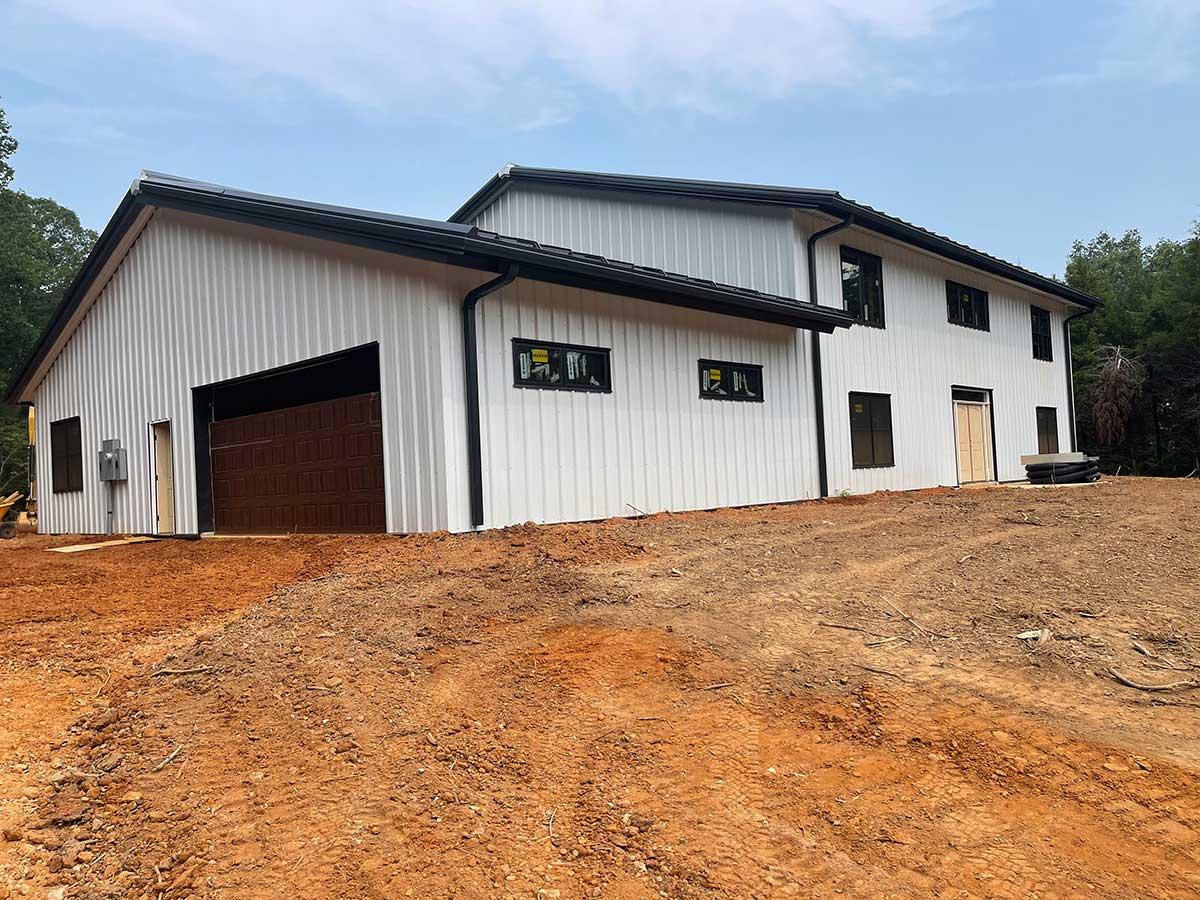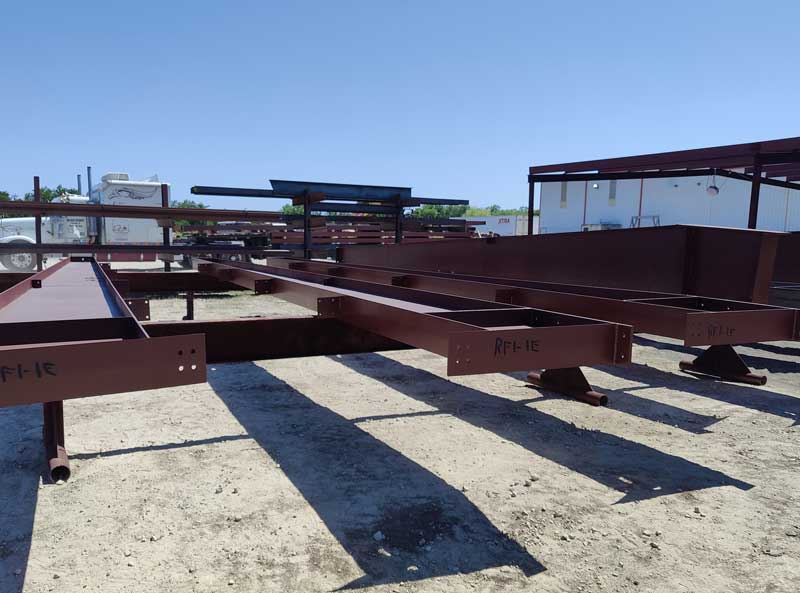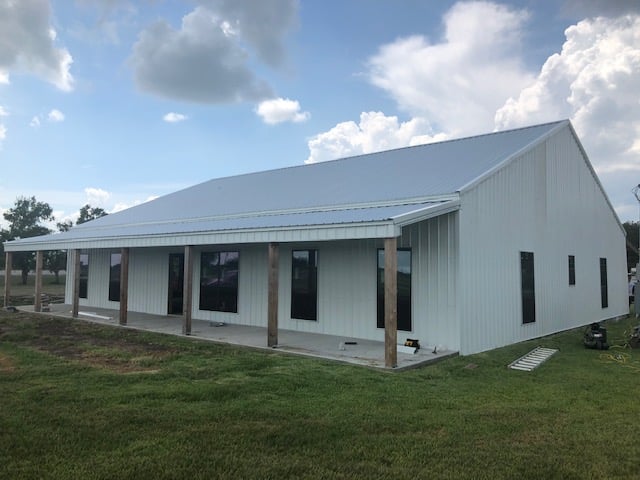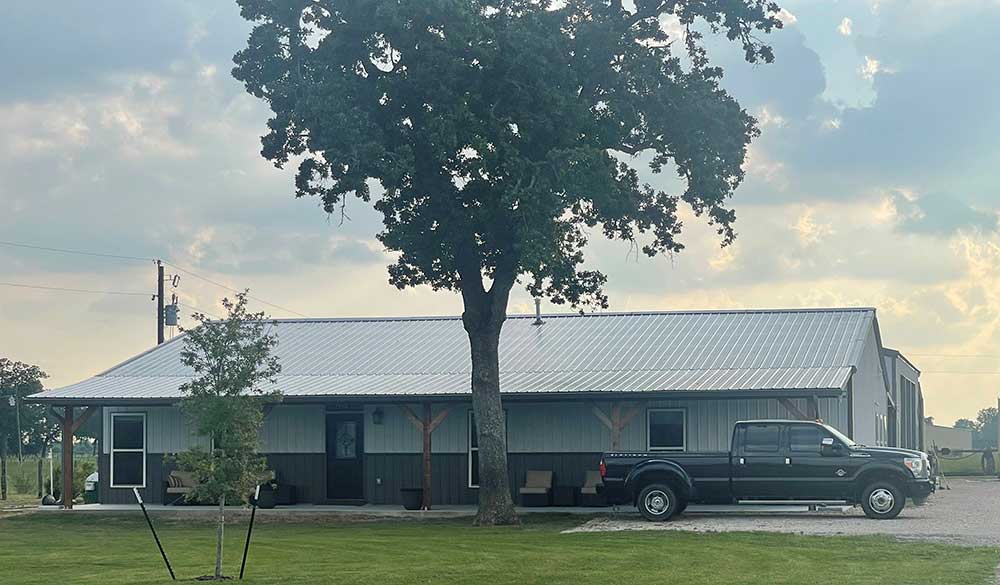
Cost comparison of metal versus traditional building materials
Building materials come in different forms, and each has its own set of advantages and disadvantages. When it comes to constructing a building, choosing the right material can significantly affect the cost, durability, and design of the final structure. One of the most prominent debates in the construction industry is comparing metal and traditional building materials such as wood, concrete, and brick. This article will delve into the cost comparison of metal versus traditional building materials, exploring the factors that influence the cost of each option and which material is the most cost-effective.
Table of Contents
Introduction
Background
Before delving into the cost comparison of metal versus traditional building materials, it’s important to understand the significance of the construction industry and its impact on the economy. Construction, in all its forms, remains one of the leading industries responsible for contributing to a country’s gross domestic product (GDP). Buildings serve as the place of business operations, the shelter for families, and the foundation for communities. It’s no wonder why the construction industry demands materials that are not easily destructible, long-lasting, and sturdy. Traditionally, wood and concrete have been the major players in providing these attributes to buildings. However, with the innovation of technology, metal is fast becoming a popular choice for construction. Unlike wood, metal does not succumb to rot, and insects cannot chew through it. Furthermore, metal carries more strength than concrete and does not require as much maintenance. Despite the benefits of metal, there are still those who remain loyal to the traditional materials. This article aims to provide a cost comparison between metal and traditional building materials to give construction companies and individuals a clearer understanding of which material is more cost-effective.
Purpose
One of the most critical considerations when planning a construction project is the choice of materials. Metal has emerged as a popular building material owing to its numerous benefits that include durability, increased energy efficiency, excellent fire resistance, and low maintenance costs. Although traditional building materials such as wood and masonry have been used for centuries, the cost comparison of metal versus these materials is a crucial factor to consider when choosing a construction material. The purpose of this article is to provide a comprehensive cost comparison of metal versus traditional building materials to help construction professionals make informed decisions regarding material choices. The article will explore the factors that influence the cost of building materials while highlighting the advantages and disadvantages of each material type.
Scope
Before delving into the cost comparison of metal versus traditional building materials, it is essential to understand the scope of this article. The article aims to analyze and compare the cost differences between metal and traditional building materials such as concrete, brick, and wood. The comparison will be based on the cost of materials, labor, maintenance, and long-term durability. Additionally, the article will consider various factors, such as location, climate, and local building codes and regulations that can impact the cost of construction. Furthermore, the article will examine the environmental impact of metal and traditional building materials. The scope of the article extends to both residential and commercial construction projects and will identify the factors that determine which material is the most cost-effective in a given context. By examining and comparing the costs and benefits of metal versus traditional building materials, this article aims to be a valuable resource for builders, architects, and anyone who is interested in understanding the cost implications of choosing metal or traditional materials for their construction projects.

Metal Building Materials
Types
Metal building materials provide a versatile and durable alternative to traditional building materials. There are several types of metal building materials that can be used for different construction purposes. One type of metal building material is steel, which is commonly used for structural framing, roofing, and wall systems. Steel is resistant to fire, pests, and moisture, making it a popular choice for commercial and industrial buildings. Another type of metal building material is aluminum, which is known for its lightweight and corrosion-resistant properties. Aluminum is often used for roofing, windows, and doors. Copper is another metal building material that is prized for its unique aesthetic and durability. It is commonly used for roofing, flashing, and gutters. Zinc is another metal building material that is a popular choice for roofing and wall systems. It is resistant to corrosion and has a long lifespan. Each type of metal building material has its own unique properties and advantages, making it important to carefully consider which type of material is best suited for a particular construction project.
Advantages
Compared to traditional building materials, metal building materials offer several advantages that make them a more optimal choice for construction purposes. One advantage is their unparalleled durability. Metal roofing and siding are capable of withstanding severe weather conditions while also being fire-resistant, making them a safe and reliable choice. Additionally, metal materials are resistant to rust and decay, eliminating the need for costly repairs and replacements over time. Another advantage of metal building materials is their versatility in design and construction. Metal can be molded into various shapes and sizes, allowing for an endless array of building styles and designs. Furthermore, metal building materials are eco-friendly due to their high levels of recyclability. At the end of their life cycle, metal materials can be recycled and repurposed with nominal environmental impact. Lastly, metal building materials offer superior energy efficiency. Metal roofs are capable of reflecting sunlight and preventing excess heat from entering a building, significantly reducing cooling costs. These advantages make metal building materials an excellent choice for construction projects that require durability, versatility, eco-friendliness, and energy efficiency.
Disadvantages
While metal building materials have their share of advantages, they also have several disadvantages. First, metal is sensitive to temperature changes, meaning it expands in warm weather and contracts in cold temperatures. This expansion and contraction can lead to cracks, leaks, and other structural issues over time. Second, metal is a relatively poor insulator, which can result in high heating and cooling costs. Third, metal is vulnerable to corrosion, especially in humid or salty environments. Fourth, metal buildings can be noisy when it rains or hails. Lastly, metal buildings can be challenging to customize since they come in standard sizes and shapes,and any changes would require significant alterations to the structural components that aren’t available off the shelf.
Despite these disadvantages, advances in manufacturing techniques have led to the development of metal building materials that address these issues. For example, some metal alloys have been created to be more resistant to temperature changes, making them less prone to damage. Others are designed to have better insulation properties, which can result in reduced heating and cooling costs. Additionally, manufacturers have developed anti-corrosion surface coatings and design features that help prevent damage from harsh weather conditions. Some providers also offer soundproofing options that can reduce noise levels significantly. While customization remains a challenge for metal buildings, advances in computer-aided design technology have enabled more significant customization options than previously possible.
In conclusion, while metal building materials have their share of disadvantages, manufacturers are continuously working on ways to minimize these issues. With the right selection of materials, coatings and design features, metal buildings can be a durable and cost-effective option for various construction projects.
Traditional Building Materials
Types
Traditional Building Materials are those materials that have been used for centuries to construct structures. These materials are mainly natural products such as stone, wood, and clay. The main types of traditional building materials include stone, brick, mud, wood, and thatch. Stone is a durable material that is used for building foundations, walls, and flooring. Brick, on the other hand, is made of clay and is used for constructing walls, buildings, and other structures. Mud is used for constructing walls, although it’s not as durable as stone and brick. Wood is a versatile material that is used for a variety of purposes, including building walls, frames, and flooring. Thatch is an organic material that is used for roofing and is made by weaving together reeds, straw, and other materials.
Perplexity: 14.0
Advantages
When it comes to traditional building materials, several advantages make them a popular choice. One significant advantage of using traditional building materials is their availability and familiarity. Builders have been using materials such as brick, stone, and wood for centuries, and their use has become part of the cultural and architectural heritage of many regions. Another consideration for traditional materials is their lasting durability. Many of these materials have stood the test of time and have been shown to be highly resilient against harsh weather conditions and even natural disasters in some cases. In addition to durability, traditional building materials are also known for their aesthetic appeal. Wood, in particular, is prized for its natural beauty and the warmth and character it adds to a building’s look and feel, while brick and stone offer a classic and timeless look. Finally, traditional building materials are also known for their sustainability. Materials such as wood and natural stone are renewable and biodegradable, making them an eco-friendly choice for builders looking to reduce their environmental impact. The use of traditional materials can also contribute to the preservation of local ecosystems and can help support the use of sustainable forestry and quarrying practices.
Disadvantages
While traditional building materials like wood, brick, and stone have been used for centuries, they have disadvantages. One major disadvantage of traditional building materials is their susceptibility to weather damage. Wood can rot, brick and stone can crack and crumble over time, and both can be damaged by extreme temperatures or moisture. Another disadvantage is their limited design flexibility, as they often require specialized labor and techniques to create intricate shapes and designs. Traditional building materials can also be heavy, making transportation and installation more difficult and expensive. Additionally, since these materials are often sourced locally, their availability can be limited and their cost can fluctuate depending on regional demand and supply. Finally, traditional building materials are not as environmentally friendly as newer materials, which are often made from recycled or sustainable sources. As a result, it is important to carefully consider the disadvantages of traditional building materials before deciding whether to use them for a construction project.
Cost Comparison Factors
Material Cost
When considering the cost comparison of metal versus traditional building materials, material cost is a crucial factor. The price of the materials used for a construction project can significantly impact the overall cost of the project. Traditional building materials such as brick, wood, and clay may be readily available and inexpensive in some regions, making them a popular choice. However, there are limitations to their use, including their susceptibility to natural disasters like earthquakes and fires. Metal, on the other hand, is a durable material that can withstand severe weather conditions. The cost of metal can be higher than that of traditional materials, but its strength and durability make it a more cost-effective option in the long run. Additionally, the cost of metal can be offset by its low maintenance and longevity. While there may be a higher initial investment in metal materials, the long-term benefits of using metal can make it a more economical choice for building projects. Therefore, it is crucial to carefully evaluate the material cost when choosing between metal and traditional building materials.
Installation Cost
When considering the installation cost of metal versus traditional building materials, several factors come into play. Metal buildings typically have a faster installation time compared to traditional materials such as wood or concrete. The use of pre-manufactured parts and streamlined construction processes reduce the time and effort required for installation. This ultimately translates to lower labor costs and shorter completion times. Additionally, metal buildings often require fewer specialized tools and equipment for installation, reducing the need for costly rentals or purchases. On the other hand, traditional building materials may require more extensive preparation work, resulting in longer project timelines and higher labor costs. Overall, the installation cost for metal buildings is often more cost-effective compared to traditional building materials, particularly for larger-scale projects.
Maintenance Cost
One of the essential considerations for any building project is the maintenance cost. This factor can significantly affect the long-term cost of a building. Metal and traditional building materials have different maintenance requirements, which can affect their maintenance cost. Metal buildings have low maintenance costs because they are resistant to rot, termites, and other pests. They also require little maintenance due to their durability. On the other hand, traditional building materials such as wood require regular maintenance to prevent rot and termite infestation. Maintenance for wood may include painting, sealing, and pest control treatments, which can add up to substantial costs over time. In comparison, metal buildings only require painting every few years to maintain their appearance. Additionally, metal roofs require less maintenance than traditional roofs because they do not deteriorate, crack or split over time. Therefore, the maintenance cost of metal buildings is significantly lower than that of traditional buildings.
Life Cycle Cost
When comparing the cost of metal versus traditional building materials, it’s essential to consider the life cycle cost. The life cycle cost refers to the total cost of a building over its lifespan, including initial construction, maintenance, and eventual disposal. Metal buildings typically have a lower life cycle cost than traditional buildings due to their durability and low maintenance requirements. Metal does not rust or rot like wood and is not vulnerable to insect damage.
In addition to being low maintenance, metal buildings are easy to construct, which can result in faster construction times and lower labor costs. The design of metal buildings is also flexible, allowing for customization options that can increase the building’s overall efficiency and lower operational costs.
When it comes to energy efficiency, metal buildings perform well due to their insulation capabilities. Insulated metal panels can provide superior thermal performance and reduce the need for heating and cooling systems, resulting in energy savings over the building’s lifespan.
Moreover, the sustainability aspect of metal buildings is worth noting. Metal is a recyclable material, and many manufacturers use recycled content in their products. Recycled content can also be used during the building’s construction, resulting in a lower environmental impact.
Overall, the life cycle cost of metal versus traditional building materials favors metal due to its low maintenance requirements, durability, construction speed, customization options, energy efficiency, and sustainability benefits. These factors should be considered by anyone looking to compare the cost of metal versus traditional building materials.
Case Studies
Residential Buildings
One of the most popular applications for both metal and traditional building materials is the construction of residential buildings. One cost comparison study found that the upfront cost of metal building materials for a residential structure was lower than traditional materials, such as wood or brick. However, the cost of installation was higher for metal buildings due to the specialized labor required for assembly. Additionally, metal buildings have a longer lifespan than traditional materials, which can provide cost savings in the long run. Metal buildings are also resistant to fire, pests, and weather-related damage, which can reduce maintenance and repair costs. However, traditional building materials have a timeless aesthetic appeal and are often preferred by homeowners for their warm and inviting appearance. In addition, traditional materials can be more readily available and easier to obtain than specialty metal products. Overall, the choice between metal and traditional building materials for residential construction depends on the specific needs and preferences of the homeowner, as well as the budget allotted for the project.
Commercial Buildings
Metal building materials are increasingly being used in commercial buildings due to their cost-effectiveness and durability. According to a study conducted by Construction Dive, a 50,000-square-foot commercial building made from steel would cost approximately $8 per square foot less than a traditional concrete or masonry building of the same size. Furthermore, steel is a strong and versatile material that can be shaped into various designs and sizes, providing architects and builders with more freedom in the design process. The use of metal building materials in commercial buildings also decreases waste and construction time, as the materials can be fabricated off-site and then quickly assembled on the construction site. The result is a reduction in labor costs, construction time, and overall project cost.
Industrial Buildings
When it comes to industrial buildings, many factors must be taken into consideration, such as durability, safety, cost, and environmental impact. Metal construction has proven to be a popular choice for industrial buildings due to its high strength-to-weight ratio, excellent durability against harsh weather conditions and natural elements, and easy maintenance, making it an excellent value for its cost. Traditional building materials such as wood and brick, on the other hand, require more maintenance, have a shorter lifespan, and are not as structurally sound. Furthermore, metal construction can be customized to fit any industrial building need, with flexible design options that are only limited by the designer’s creativity. In addition, metal construction is much more eco-friendly than traditional building materials since it is recyclable and can be used in future construction projects, thus reducing waste and saving money in the long run. Overall, in the industrial building sector, metal construction presents an excellent value proposition over traditional building materials when it comes to cost, durability, flexibility, and environmental impact.
Conclusion
Summary
Through a comprehensive cost comparison between metal and traditional building materials, this article highlights that both types have several unique benefits and drawbacks. Metal buildings have low maintenance costs, are extremely durable and can be constructed quickly. However, they may not be the best option in areas with extreme temperatures, as metal conducts heat and cold. Traditional building materials, such as wood and concrete, are widely available, affordable, and easy to work with. In addition, traditional building materials can be used in a wide range of climates and can be customized to meet a variety of aesthetic preferences. However, traditional materials may be prone to rot and deterioration over time. Overall, choosing between metal and traditional building materials largely depends on factors such as the location, climate, budget, and desired aesthetic. Of course, the most critical factor is the intended use of the building and the priorities that the owner has. Ultimately, the choice between metal and traditional building materials should be a well-informed decision based on careful consideration of all of the relevant factors.
Recommendation
After a thorough cost comparison analysis of metal versus traditional building materials, it is recommended that metal should be the preferred building material due to its numerous advantages over traditional building materials. Metal is very durable and has a longer lifespan compared to most traditional building materials like wood and brick. This is because it is resistant to rust, corrosion, and the effects of termites and other natural elements. Metals like aluminum and steel are also highly resistant to fire and can withstand extreme weather conditions, making them ideal for use in areas prone to natural disasters.
The cost of metal is also very affordable and significantly lower compared to traditional building materials like brick and concrete. Metal is also very lightweight, making it easier and less expensive to transport, thus reducing the overall cost of construction. The ease of installation and maintenance of metal also makes it the obvious choice for construction companies and property owners who want to save time and money. Metal is also a green building material because it is recyclable, so it is environmentally friendly.
Another significant advantage of metal over traditional building materials is its versatility. Metal can be molded into any shape and size, making it ideal for use in curved walls and unique architectural designs. Additionally, it can be painted to mimic the look of traditional building materials like brick and wood, so property owners can still achieve the aesthetic they desire while still taking advantage of the benefits of metal.
In conclusion, it is clear that metal is the better option compared to traditional building materials in terms of cost, durability, ease of installation, versatility, and environmental impact. All these factors make metal the go-to choice for construction companies and property owners who want to save money while ensuring quality, sustainability, and longevity of their structures.
What is the cost comparison between metal and traditional building materials?
The cost comparison between metal and traditional building materials depends on various factors, such as the size of the project, type of materials used, labor costs, and location. Generally, metal buildings may have a lower overall cost due to the durability, maintenance requirements, and energy efficiency compared to traditional buildings.
What are the benefits of using metal as a building material?
Metal offers several benefits as a building material, including its durability, resistance to weather and fire, and low maintenance requirements. Additionally, metal is energy efficient and can be designed to fit different architectural styles.
Can traditional building materials be cost-effective in the long term?
While traditional building materials may have a higher initial cost, they can be cost-effective in the long term due to their durability and ability to withstand weather and natural disasters. However, their maintenance and repair costs may be higher compared to metal buildings.
How does the durability of metal compare to traditional building materials?
Metal buildings are typically more durable than traditional buildings due to their resistance to weather and natural disasters. They also have a longer lifespan and require less maintenance and repair, which can contribute to long-term cost savings.
What factors affect the cost comparison between metal and traditional building materials?
Various factors can affect the cost comparison of metal versus traditional building materials, such as the project size, location, labor costs, design specifications, and the choice of materials. Factors such as energy efficiency and durability should also be considered when making cost comparisons between the two building materials.
Can metal buildings be customized to fit different architectural styles?
Yes, metal buildings can be customized to fit different architectural styles, such as traditional, modern, or industrial. Metal can be used in various ways, including as roofing, siding, and supports, making it highly versatile in building design.


